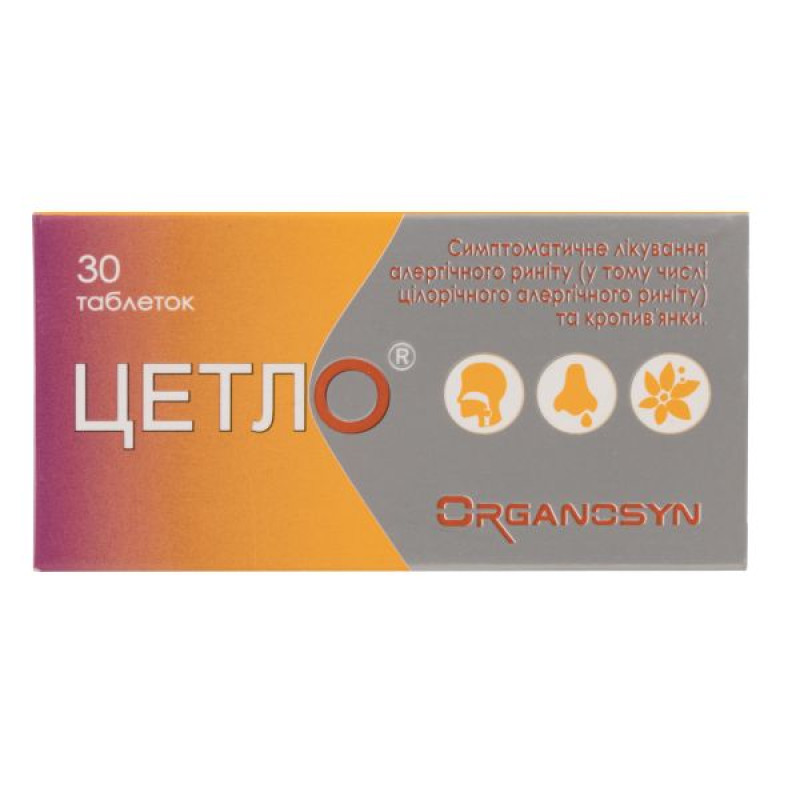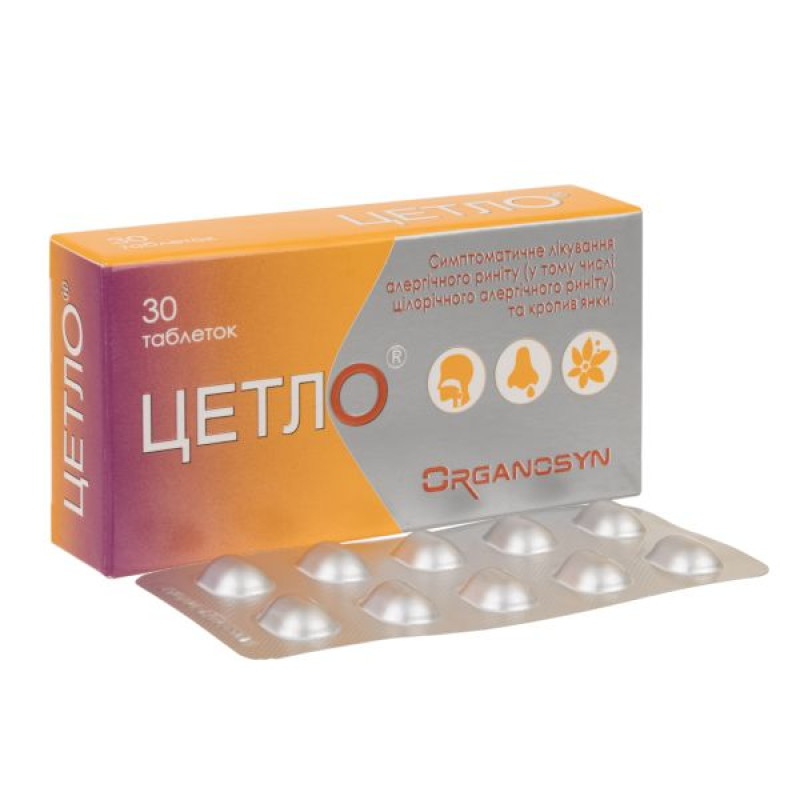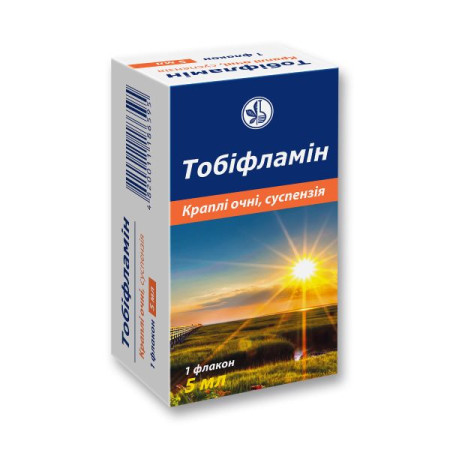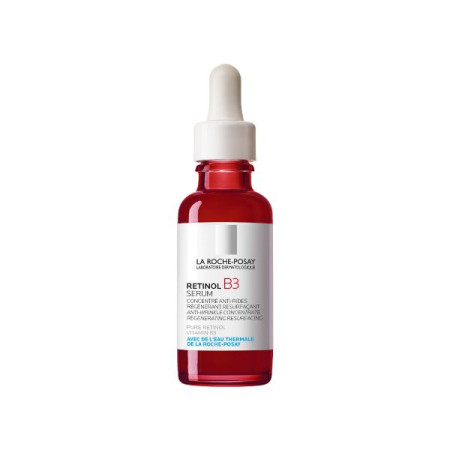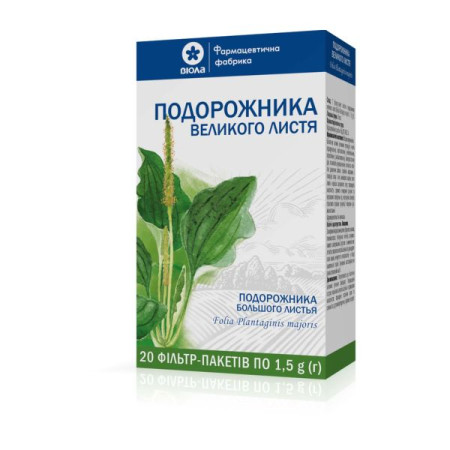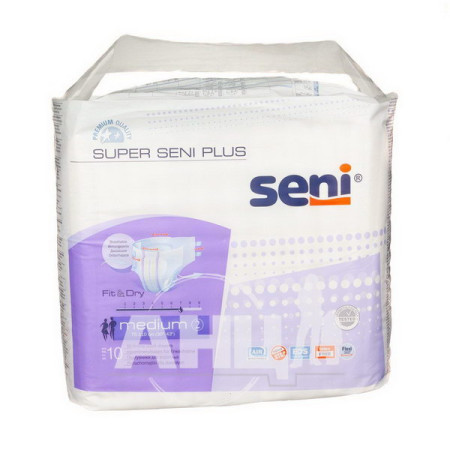Cetlo 5 mg tablets No. 30
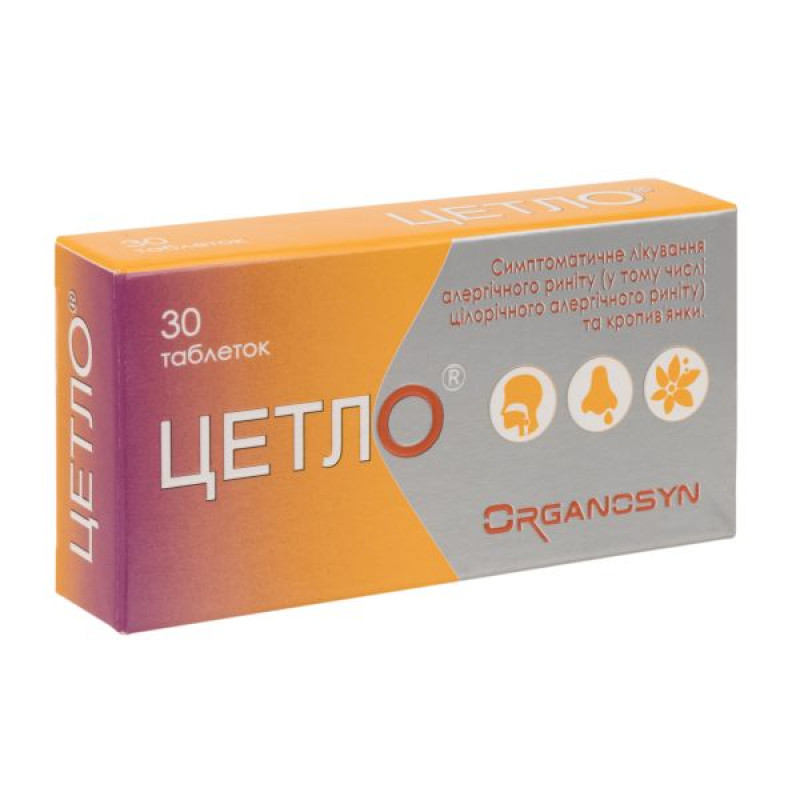
Instructions for use of Tsetlo 5 mg tablets No. 30
Composition
active ingredient: levocetirizine;
1 film-coated tablet contains levocetirizine dihydrochloride 5 mg;
excipients: croscarmellose sodium, microcrystalline cellulose, colloidal anhydrous silica, magnesium stearate; film coating Opadry white (03K58884): hypromellose, titanium dioxide (E 171), triacetin.
Dosage form
Film-coated tablets.
Main physicochemical properties: white or almost white, oval, flat on both sides, film-coated tablets.
Pharmacotherapeutic group
Antihistamines for systemic use. Piperazine derivatives.
ATX code R06A E09.
Pharmacological properties
Pharmacodynamics
Levocetirizine is an active stable R-enantiomer of cetirizine, which belongs to the group of competitive histamine antagonists. The pharmacological action is due to the blocking of H1-histamine receptors. The affinity for H1-histamine receptors of levocetirizine is 2 times higher than that of cetirizine. It affects the histamine-dependent stage of the development of an allergic reaction, reduces eosinophil migration, vascular permeability, limits the release of inflammatory mediators. Prevents the development and reduces the manifestations of allergic reactions, has anti-edematous, antipruritic, anti-inflammatory effects, and has almost no anticholinergic and antiserotonin effects.
Pharmacokinetics
The pharmacokinetic parameters of levocetirizine are linear and almost do not differ from those of cetirizine.
Absorption.
The drug is rapidly absorbed after oral administration. The degree of absorption of the drug does not depend on the dose of the drug and does not change with food intake, but the rate of its absorption decreases, the maximum concentration (Cmax) reaches its maximum value later. The equilibrium concentration in the blood is achieved after 2 days of taking the drug. Cmax in blood plasma is reached after 50 minutes and is 270 ng/ml after a single dose and 308 ng/ml after repeated use at a dose of 5 mg per day. In 50% of patients, the effect of the drug develops 12 minutes after taking a single dose, and in 95% - after 0.5-1 hour. Bioavailability reaches 100%.
Distribution.
There is no information on the distribution of the drug in human tissues, as well as on the penetration of levocetirizine through the blood-brain barrier. In studies, the highest concentration was recorded in the liver and kidneys, and the lowest - in the tissues of the central nervous system. The volume of distribution is 0.4 l / kg. Binding to plasma proteins is 90%.
Biotransformation.
In humans, about 14% of levocetirizine is metabolized. The metabolic process includes oxidation, N- and O-dealkylation, and conjugation with taurine. Dealkylation occurs primarily with the participation of cytochrome CYP 3A4, while the oxidation process involves multiple and/or unidentified CYP isoforms. Levocetirizine does not affect the activity of cytochrome isoenzymes 1A2, 2C9, 2C19, 2D6, 2E1, 3A4 at concentrations significantly exceeding the maximum after taking a 5 mg oral dose. Given the low degree of metabolism and the lack of ability to inhibit other metabolic processes, the interaction of levocetirizine with other substances (and vice versa) is unlikely.
Breeding.
Excretion of the drug occurs mainly due to glomerular filtration and active tubular secretion. The half-life of the drug from blood plasma in adults (T1/2) is 7.9 ± 1.9 hours. Total clearance in adults is 0.63 ml/min/kg. Levocetirizine and its metabolites are mainly excreted in the urine (an average of 85.4% of the administered dose is excreted). Only 12.9% of the administered dose is excreted in the feces.
The clearance of levocetirizine is correlated with creatinine clearance. Therefore, in patients with moderate to severe renal impairment, it is recommended to select the dosage regimen of levocetirizine taking into account creatinine clearance. In the case of anuria in end-stage renal disease, the total body clearance of patients is reduced by approximately 80% compared to the total body clearance of individuals without such impairment. The amount of levocetirizine removed during a standard 4-hour hemodialysis procedure was < 10%.
Indication
Symptomatic treatment of allergic rhinitis (including perennial allergic rhinitis) and urticaria.
Contraindication
Hypersensitivity to levocetirizine, cetirizine, hydroxyzine or any other piperazine derivatives, or to any other component of the drug.
Severe chronic renal failure (creatinine clearance < 10 ml/min).
Rare hereditary problems of galactose intolerance, lactase deficiency or glucose-galactose malabsorption.
Interaction with other medicinal products and other types of interactions
Co-administration with theophylline (400 mg daily) reduced the total clearance of levocetirizine by 16% (theophylline kinetics were not altered). In a multiple dose study of ritonavir (600 mg twice daily) and cetirizine (10 mg daily), the exposure of cetirizine increased by approximately 40%, while the disposition of ritonavir was slightly altered (-11%) when co-administered with cetirizine.
Food intake does not affect the extent of absorption of the drug, but reduces the rate of its absorption.
There is no evidence of an increase in the effects of sedatives when used in therapeutic doses. However, the use of sedatives should be avoided while taking the drug.
Concomitant use of cetirizine or levocetirizine and alcohol or other central nervous system depressants in susceptible patients may cause additional impairment of alertness and ability to perform work.
Application features
Use with caution in patients with chronic renal failure (dosage adjustment required) and in elderly patients (due to possible decreased glomerular filtration).
While using the drug, you should refrain from drinking alcohol.
When prescribing the drug, it is necessary to pay attention to the presence of certain factors in patients that provoke urinary retention (such as spinal cord injuries, prostatic hyperplasia), since levocetirizine increases the risk of urinary retention.
The use of sedatives should be avoided while taking the drug.
Ability to influence reaction speed when driving vehicles or other mechanisms
You should refrain from driving or operating machinery during treatment with the drug.
Use during pregnancy or breastfeeding
Levocetirizine is contraindicated for use during pregnancy. The drug penetrates into breast milk and therefore, if necessary, breastfeeding should be discontinued.
Method of administration and doses
The drug is prescribed to adults and children over 6 years of age orally, 1 tablet once a day. Take regardless of meals; the tablet should be swallowed without chewing, with a small amount of water.
For elderly patients with normal renal function, dose adjustment of the drug is not required.
For patients with impaired renal function, the dose calculation should be based on creatinine clearance, according to the table below.
Dose adjustment for patients with impaired renal function
| Kidney function | Creatinine clearance, ml/min | Dosage and number of doses |
| Normal kidney function | ≥ 80 | 5 mg once daily |
| Mild impairment | 50-79 | 5 mg once daily |
| Moderate impairment | 30-49 | 5 mg once every 2 days |
| Severe violation | < 30 | 5 mg once every 3 days |
End-stage kidney disease. Patients on dialysis | < 10 | Contraindicated |
For children with impaired renal function, the dose of the drug should be adjusted individually, taking into account renal clearance and body weight.
Patients with hepatic insufficiency do not require dosage adjustment.
Patients with hepatic and renal insufficiency should adjust the dosage regimen according to the table above.
Duration of use.
Patients with intermittent allergic rhinitis (symptoms < 4 days per week or < 4 weeks) should be treated according to their disease and history; treatment may be discontinued if symptoms resolve and may be resumed if symptoms recur.
In case of persistent allergic rhinitis (duration of symptoms of the disease is > 4 days per week or more than 4 weeks) during the period of contact with allergens, the doctor may prescribe permanent therapy. In case of chronic diseases (chronic allergic rhinitis, chronic urticaria), the duration of treatment is up to 1 year.
Children
The drug in tablet form should not be used in children under 6 years of age, as this dosage form does not allow for the necessary correction of the dosage regimen. It is recommended to use levocetirizine in another dosage form in this category of patients.
Overdose
Symptoms of overdose may include drowsiness in adults and initial agitation and increased irritability followed by drowsiness in children.
Treatment. There is no specific antidote for levocetirizine. In case of symptoms of overdose, symptomatic and supportive therapy is recommended. Gastric lavage should be considered shortly after ingestion. Hemodialysis is not effective in removing levocetirizine from the body.
Adverse reactions
Nervous system: drowsiness, headache, fatigue, weakness, asthenia, convulsions, paresthesia, dizziness, fainting, tremor, dysgeusia.
Psychiatric: sleep disturbances, agitation, hallucinations, depression, aggression, insomnia, suicidal thoughts.
Cardiac: palpitations, tachycardia.
On the part of the organs of vision: visual impairment, blurred vision.
Hepatobiliary disorders: hepatitis.
Renal and urinary disorders: dysuria, urinary retention.
Immune system disorders: hypersensitivity, including anaphylaxis.
Respiratory, thoracic and mediastinal disorders: dyspnea.
On the part of the digestive tract: dry mouth, nausea, vomiting, abdominal pain, diarrhea, constipation.
Skin and subcutaneous tissue disorders: angioedema, persistent drug eruptions, pruritus, rash, urticaria.
Musculoskeletal system: myalgia, arthralgia.
Research results: weight gain, abnormal liver function tests.
Nutrition and metabolism disorders: increased appetite.
General disorders: edema.
Expiration date
2 years.
Storage conditions
Store in original packaging at a temperature not exceeding 25 ° C. Keep out of the reach of children.
Packaging
10 tablets in a blister, 3 blisters in a cardboard pack.
Vacation category
Without a prescription.
Producer
Evertogen Life Sciences Limited.
Evertogen Life Sciences Limited.
Location of the manufacturer and its business address
Plot No.: S-8, S-9, S-13/P and S-14/P T E C I A C, S I Z Pharma, Green Industrial Park, Polepally (V), Yedcherla (M), Mahabubnagar, Telangana, IH-509 301, India /
Plot No: S-8, S-9, S-13/P & S-14/P TSIIC, Pharma SEZ, Green Industrial Park, Polepally (V), Jadcherla (M), Mahabubnagar, Telangana, IN-509 301, India
There are no reviews for this product.
There are no reviews for this product, be the first to leave your review.
No questions about this product, be the first and ask your question.







